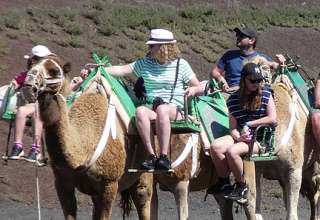Every day I found myself in the mountains, seeing things no guidebook mentioned.
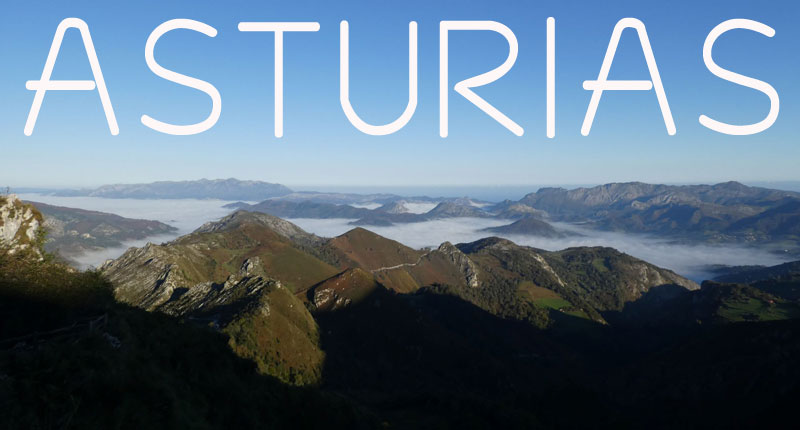
Photographs by Richard Frisbie
The clouds of Asturias roll in over the rocky shore from the Cantabrian Sea like fog, filling the valleys and cascading over the low hills to butt against the spikey ridgelines of the Pico de Europa mountains in the interior, causing them to look like islands in an inland cotton sea. We drove to this view early one morning on a winding mountain road, the only traffic a herd of cows coming down from their summer pasture, nonplussed by our presence, yet they skitter by, their cowbells echoing the change of seasons through the valleys long after they pass.
We are following Jose Andres’ guide to experiencing Asturias. The world-renowned humanitarian and chef was born here and returns as often as possible to replenish his soul in the stark mountains, lush valleys, and rugged coastline of his family home. He said to truly learn the heart of my country “begin your day in the mountains with the sunrise”. And so we did.
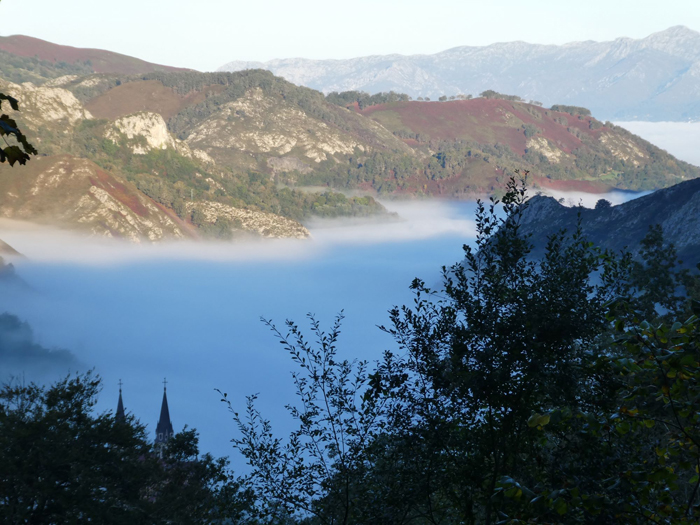
Breaking through the clouds as we continued to climb this serpentine road, more a switch-back narrow track than a bonified highway, we stopped at an overlook with a view on clear days far down through the valleys and out to sea. Today, with the sound of the cowbells still reverberating in the hills, the spires of the Basilica of Covadonga were all that was visible poking through the mists below, while the horizontal light of sunrise gilded the mountaintops above as they pierced the impossibly blue sky.
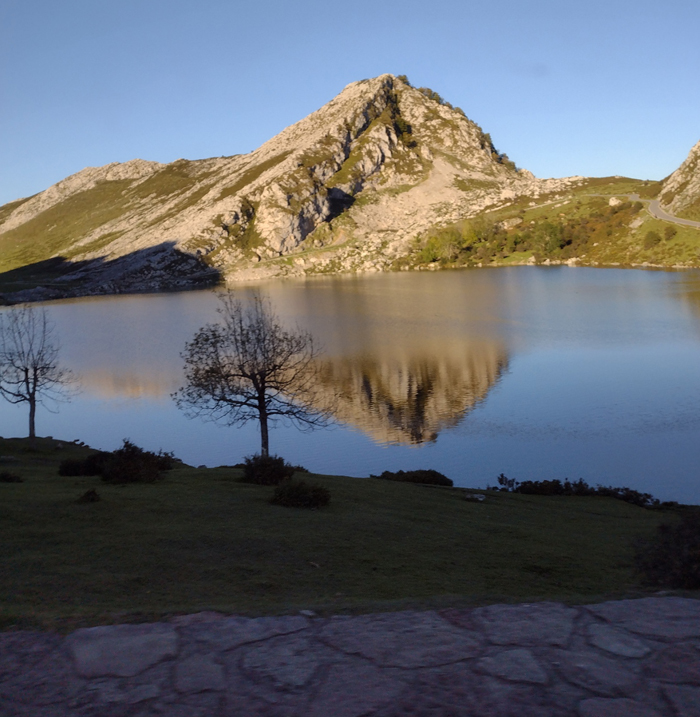
We drove on, upward through the sentinel peaks to look down into the branas, or high valley pasture where the cows had summered, the golden ridges reflected in the mirror waters of two pristine lakes, Enol and Ercina. This is a popular destination in the Pico de Europa National Park, already busy with the early-risers, and soon to be busier with busloads expected to crowd this verdant valley until its serenity is broken, only to be refreshed overnight and readied for a new dawn and the onslaught to return.
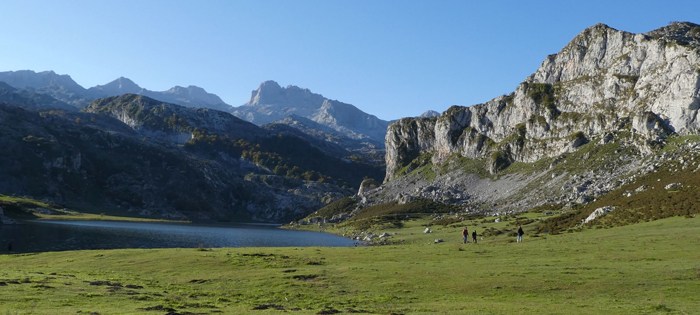
There are day hikes, limited overnight camping and only one small lodge to hike in to, so it is a daytrip to be enjoyed at dawn and dusk, and possibly for moonlight stargazing, when the crowds are thinnest. We left before the sublime beauty was crushed under the arriving busses.
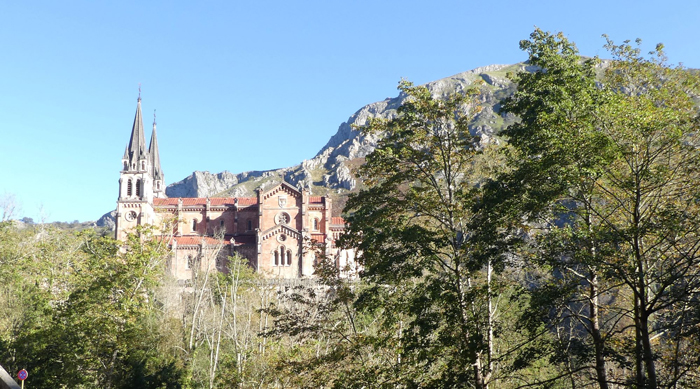
The rising sun’s rays washed down the valley walls pushing the clouds lower, until as we descended, we could see the huge basilica emerge beneath its spires. Nearby a tiny church was tucked into a grotto above a cascading waterfall that filled the pool below.
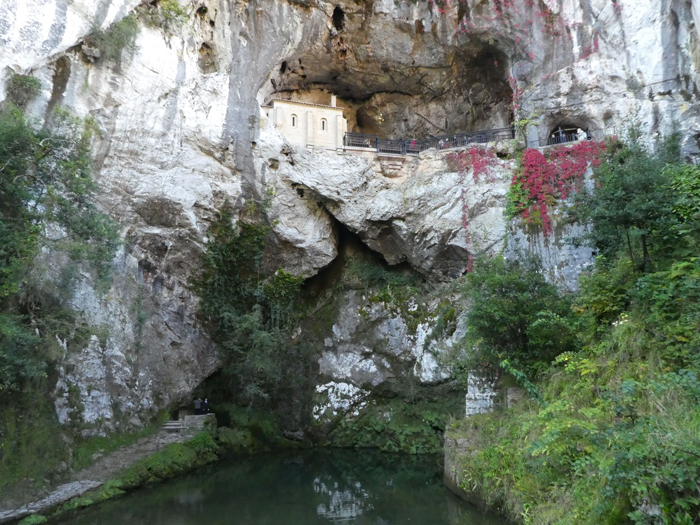
This achingly picturesque spot is where one legend tells us that the Virgin Mary appeared to Palacio (Palayo) leader of the Spanish forces, and handed him a cross, telling him that if he carried her cross into battle against the Moors, Spain would be Christian. Another, more likely scenario, has him praying for victory to a statue of the virgin he found hidden in the cave while lying in wait for the Moors. Asturias was Spain’s last holdout against the advancing Moorish army, with Palacio’s victory marking the beginning of a surge, called the Reconquista, that eventually drove the Moors out of Spain.
Of course, defeating a force that was so entrenched in Spain does not remove its many influences. The further south you travel in Spain the more pronounced are the architectural and culinary remains of the North African culture. (The Alhambra and sherry immediately come to mind.) And even in Asturias the occasional Moorish arch in a window reminds us of the pervasiveness of their influence.
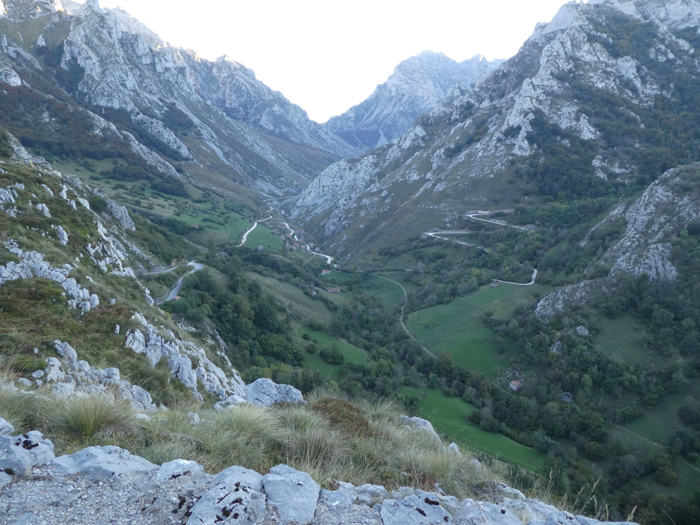
The beauty of our surroundings dulled these thoughts of conquest as we continued to a distant branas unknown to tourists, ironically called Las Vegas del Toro because it was once the home of the bull that serviced the local herds. This is where the last of the shepherds still minds his flock of sheep. Following a rutted, 4×4 dirt track miles off road, past a tiny village, we entered a pristine green valley surrounded by barren mountain peaks.
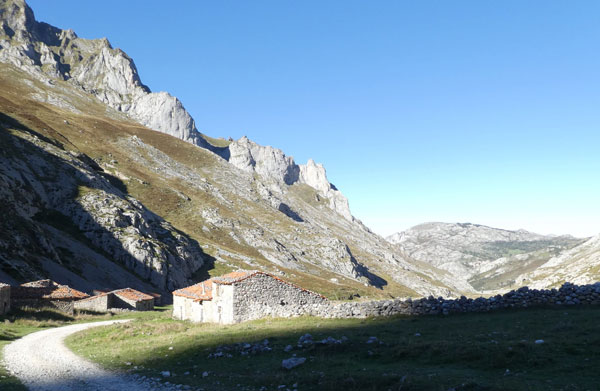
Here we found a cluster of ancient stone buildings, their red tile roofs held in place against the wind with stones the glaciers dropped when they receded millennium ago. That is, the roofs that hadn’t collapsed already. There is a sad state of disrepair and dereliction evident in the mountain beauty.
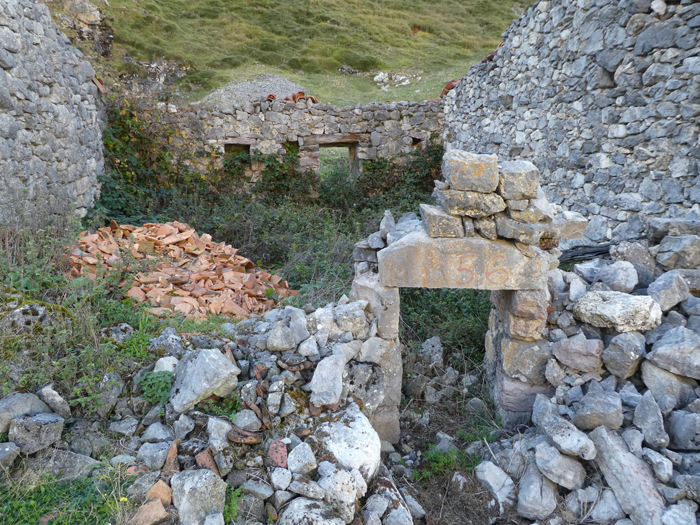
This was once a community of twenty or so shepherds, each minding his flock in these summer pastures. By day the sheep roamed the valley and surrounding slopes, guided by the sheepdogs and their master, the gentle ringing of their bells reminiscent of a Tibetan Bowl ceremony in the quiet high-altitude serenity. At dusk the sheep were herded into a paddock that led to a cave for shelter and protection from inclement weather and the ever-present wolves.
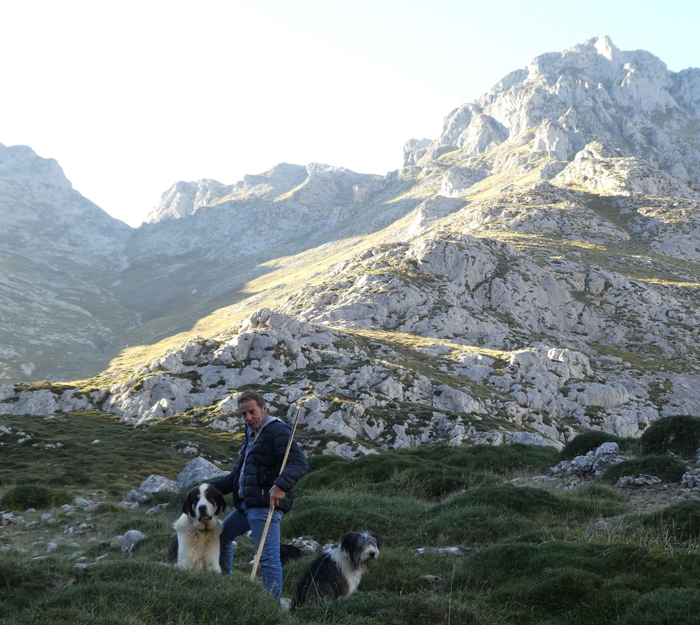
The lead dog, a large mastiff fitted with a spiked collar to shield his throat from wolf attack, remained with the flock overnight while the shepherd rested in his stone hut or made his way back to the village. His is a solitary life made more so because he is the last of his kind in the valley. When he is gone, more than just the shepherd and a way of life will be lost.
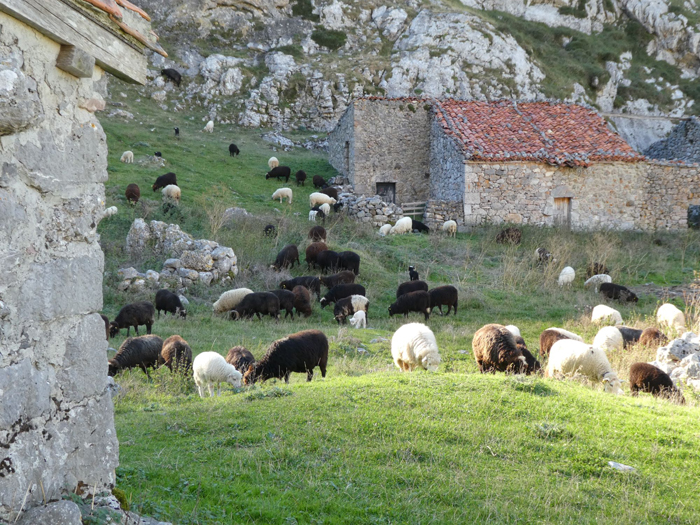
The delicate ecological balance of the valley’s environment will be disrupted, the plants the sheep no longer eat will flourish, choking out the grasses and wildflowers as they overrun the valley. But for now, the sound of the sheep’s bells persists, soothing in the pure mountain air.
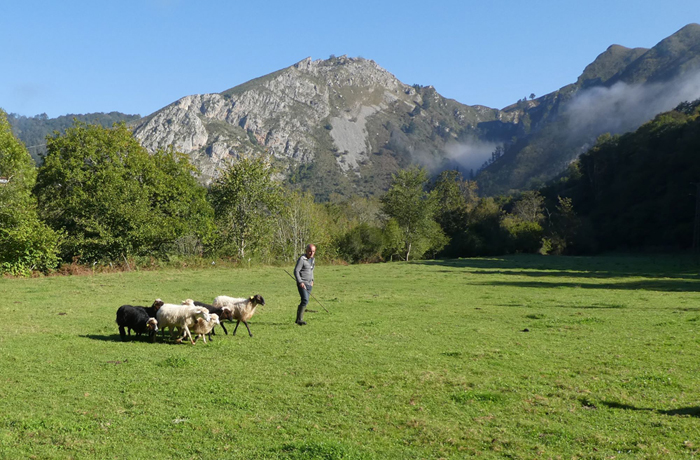
Leaving the shepherd and his flock far behind, we soon found ourselves on a small back road, one that climbed through forests in a national preserve for Spain’s endangered brown bear, past tiny villages of 20 to 30 stone houses clinging to the steep hillsides. We were here to explore another fast-disappearing way of country life: teitos, or thatched roof cottages.
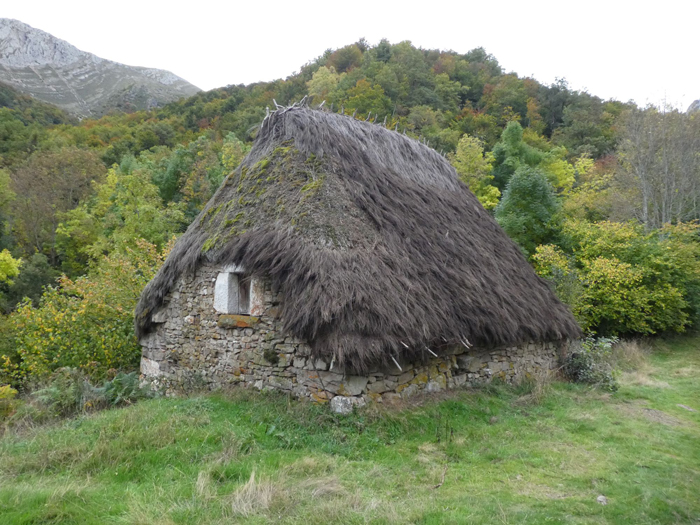
Accompanied by the sounds of a mountain stream tumbling down through the steep valley below, and ever on the look-out for bears, we hiked into La Brana Campa (place where shepherds stay) in Saliencia Valley to find three thatch-roofed stone houses, really cow houses, nestled in obscurity. Centuries old, these houses are where the cows were wintered over once they came down from summer’s high pasture.
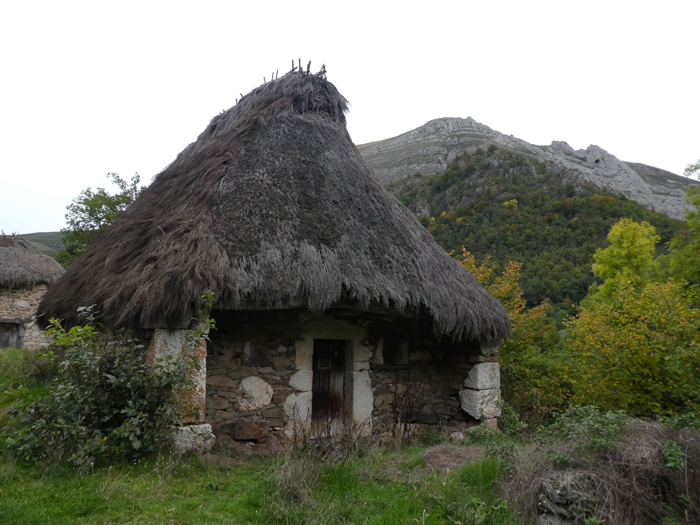
Each has a small field for the six or so cows they hold, and the surrounding slopes are thick with broom, the plant used to thatch the roofs. The earthen ground floor houses the cows; the loft above holds the hay to feed them when there is more than a dusting of snow on their pasture. The men hike in and out from the small villages nearby to care for their herd as needed, sometimes staying overnight in the haylofts if bad weather persists, the body heat from the cows keeping them warm.
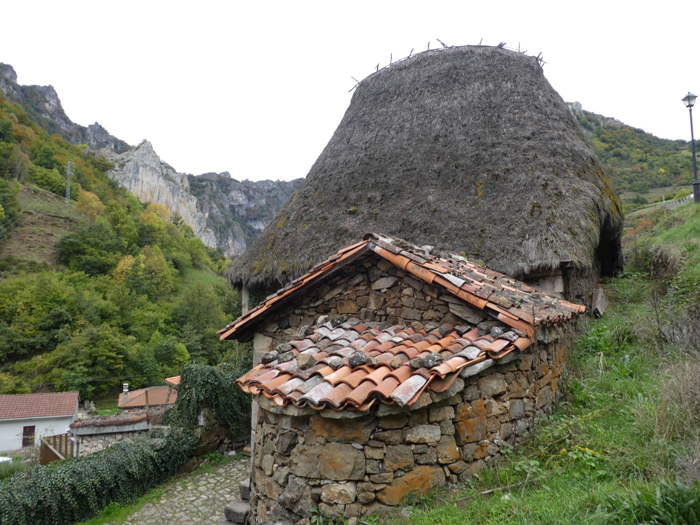
Originally, teitos were more than cow houses. In one tiny village nearby is a museum dedicated to teitos as houses for people, too. Ecomuseo de Somiedo Las Casas de Teito de Escobe is a cluster of three houses. One was being renovated so we could not visit it. Another, called Casa Rosa, was the more prosperous residence, built on a hillside with an attached kitchen, and the area above the cow pen a one room living quarters, with hay for the animals in the loft above it. This one even had an oven with a rounded back stonewall built off the kitchen, with room for pigs to sleep beneath.
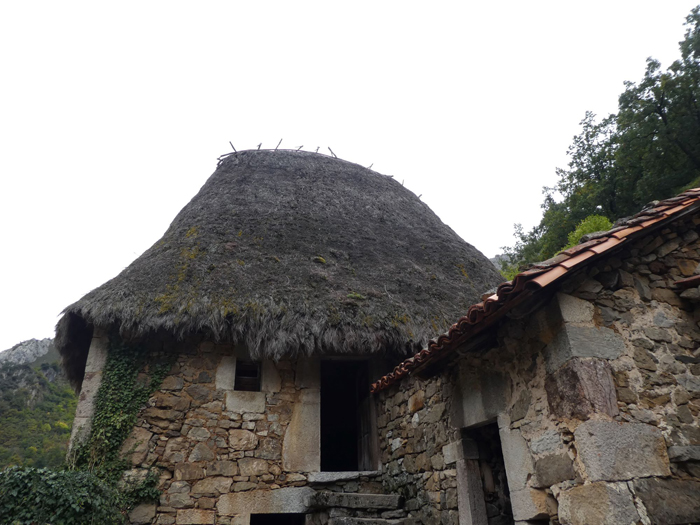
The kitchen also had a typical open fire in the floor with seating around it and no opening for the smoke to be released. The only opening was the door, which was used to go outside to climb stairs to the living quarters. Everything in the kitchen was black with ancient soot. Sitting around the fire while working was called filandox, and it is where knitting and other group activities took place.
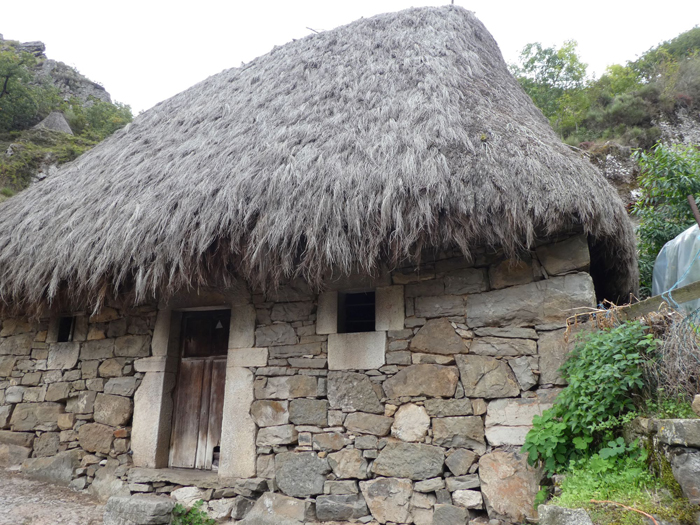
The third teitos, Casa Flora, was the poorer residence. The cows had a stall to the right as you entered. The rest was an “L” shaped room with a kitchen similar to Casa Rosa, but without the oven, with a bed in the alcove. In each, plumbing was nonexistent, nor were there outhouses. The compost pile in the kitchen garden served that purpose, your bodily functions on display as all aspects of life are in a small village. People lived in this house until 1954, when the road came through that connected all the isolated villages. Before that, people could be born, live, and die without ever leaving.
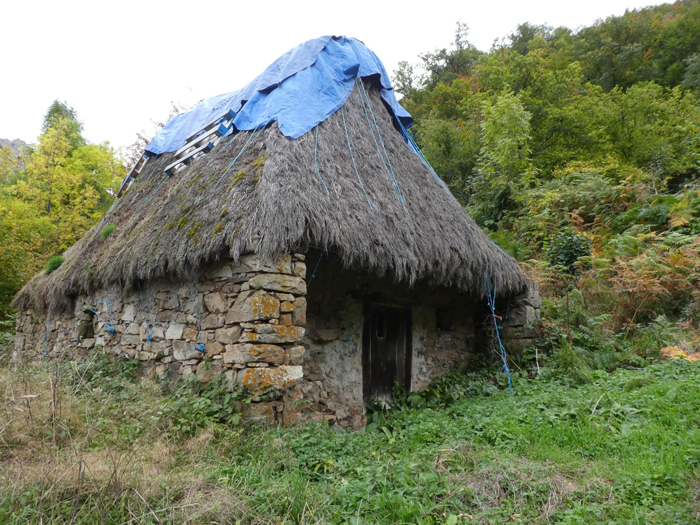
This way of life is being preserved somewhat, as the teitos are registered and numbered as historic landmarks. But of the three we saw at La Brana Campa, one’s roof beam had broken, the thatch folding into the center, one had a blue tarp over a presumably damaged roof, and only the last was intact. It was numbered #224, while Casa Flores and Casa Rosa in the museum complex were #32 and #33 respectively. Less than 300 teitos exist today. As the people who use them pass, more will decline. We were extremely fortunate to see these ties to past traditions that have survived. But I have to wonder how long they will last.
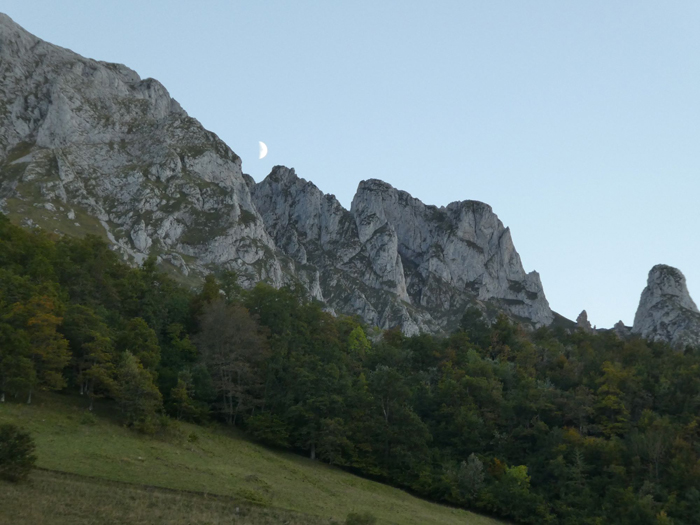
And that’s why I travel; to see the history and culture of a region. To feel the beating heart of the rural countryside and see the agricultural history of a place means so much more to me then all the cathedrals and Roman ruins combined. And, of course, there is always the food and wine to taste and experience. But that is another story.



